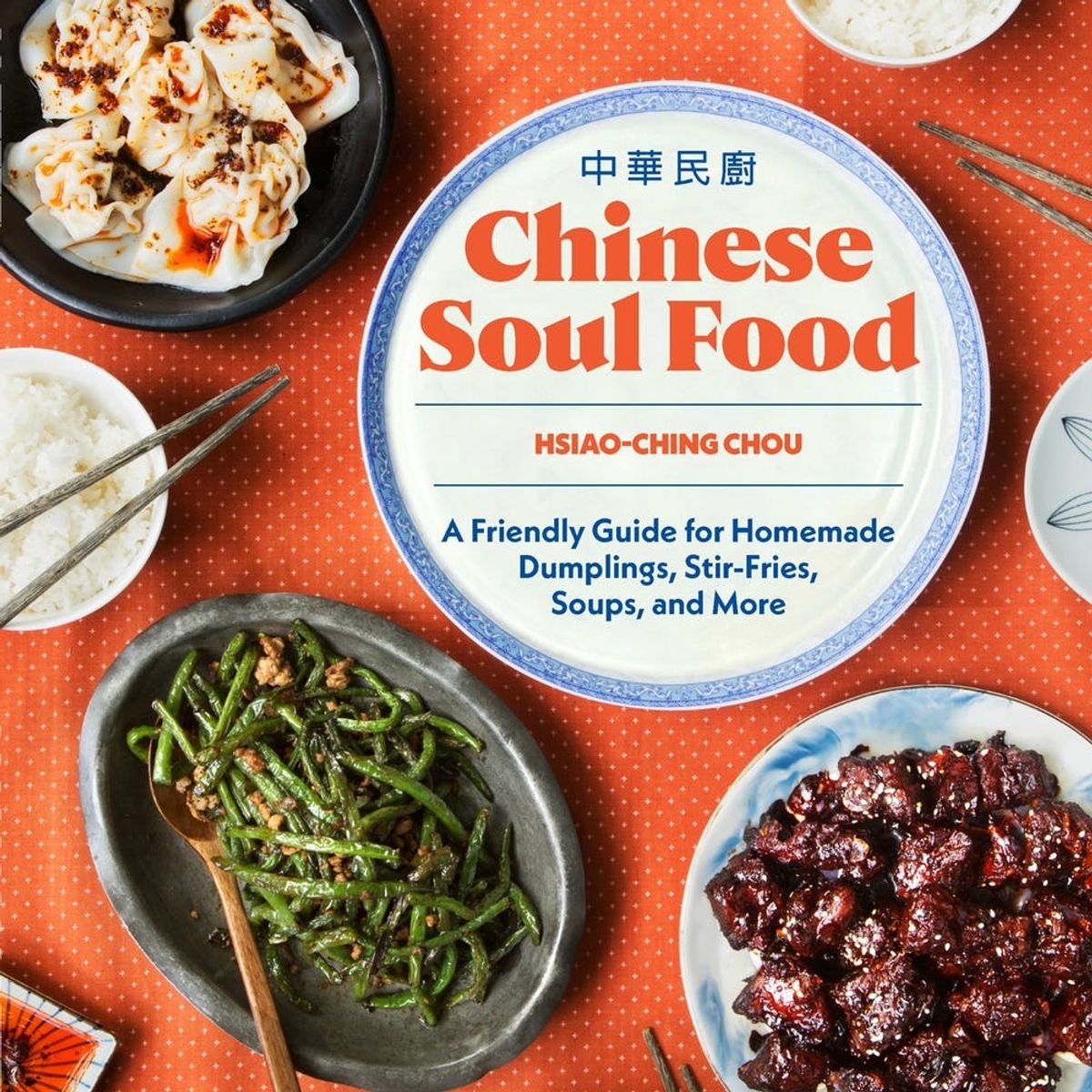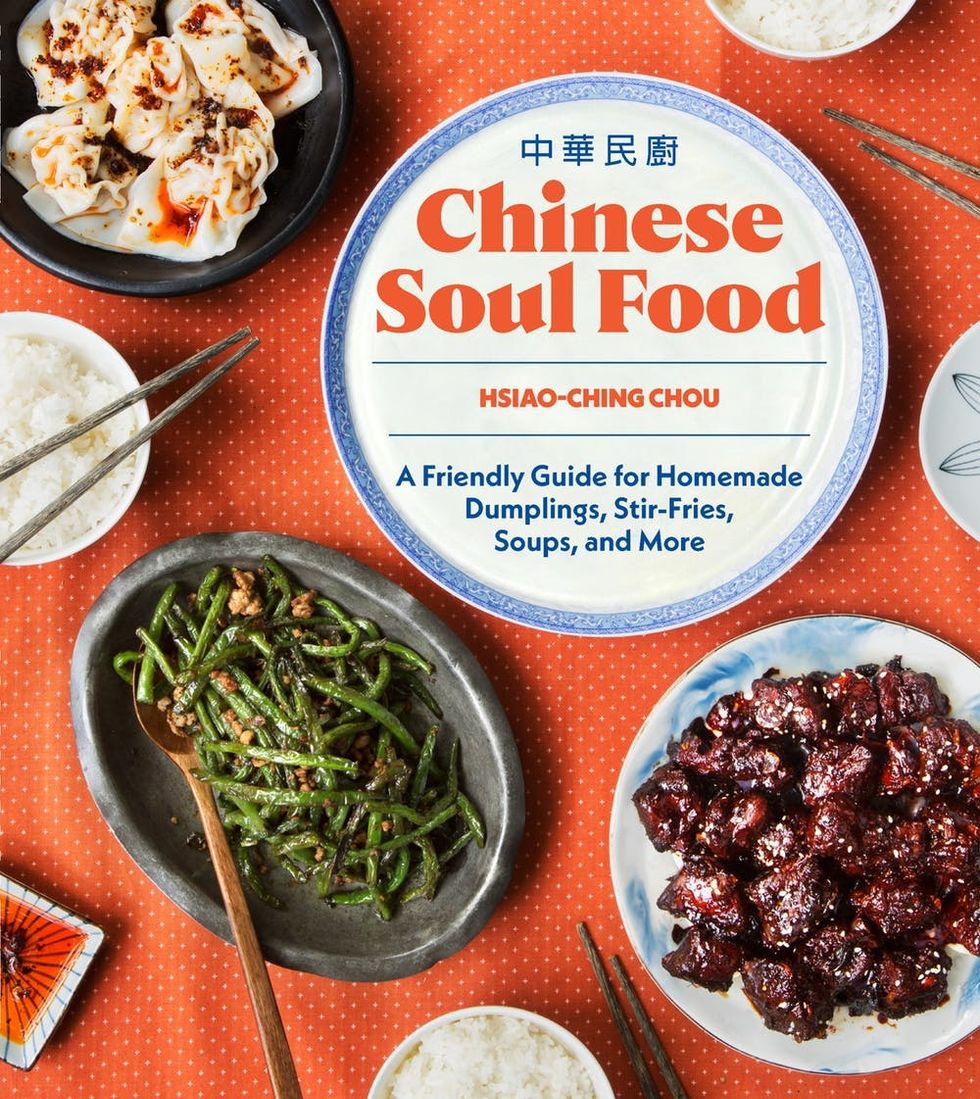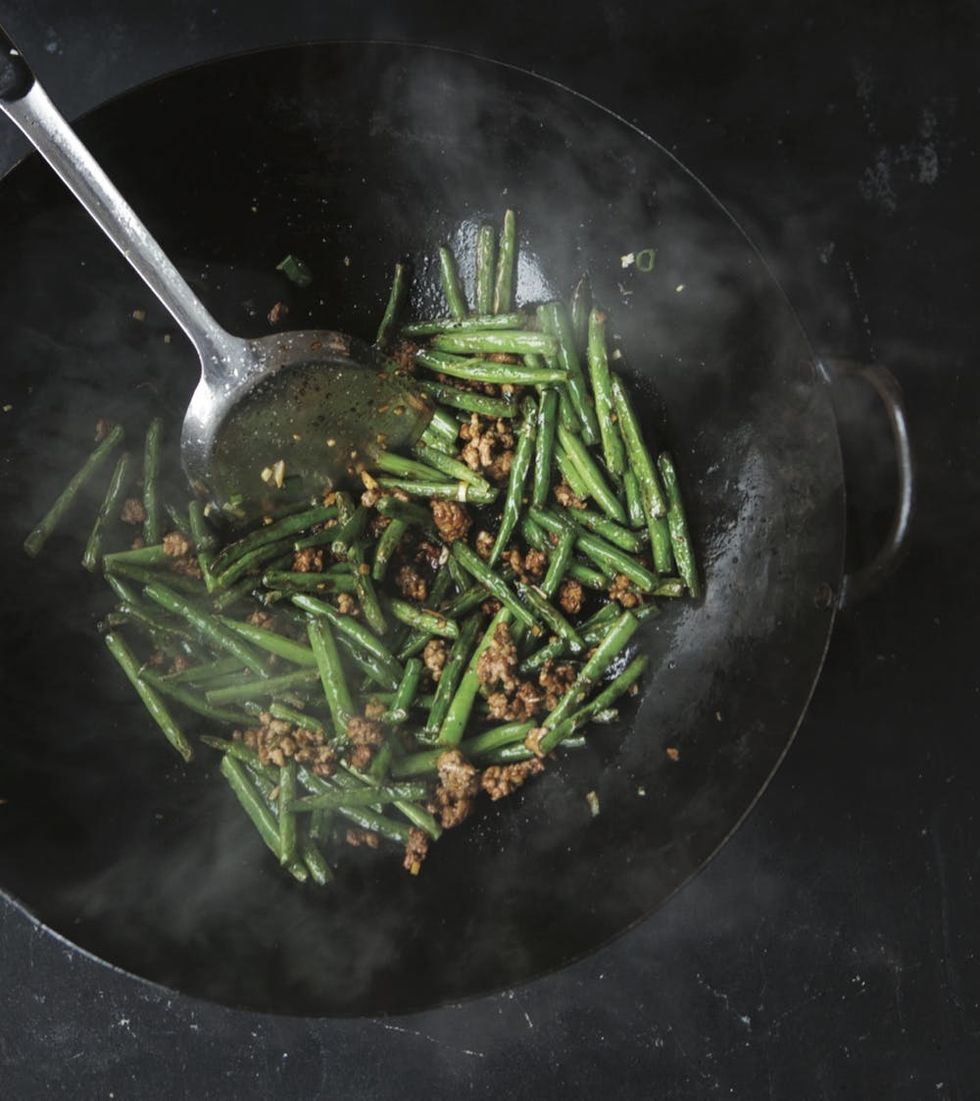This Chinese food speaks to the soul.
How to Make Chinese Soul Food at Home (and Stop Spending So Much on Delivery)

Even though we love Chinese restaurants, cookbook author Hsiao-Ching Chou realized that most Americans aren’t cooking it at home. Knowing that they are missing out, she wrote Chinese Soul Food ($25), a primer that covers all the essential recipes and techniques you should master if you want to start whipping up delicious home-cooked Chinese food in your own kitchen. Yes, you’ll need to procure a wok and wok spatula, but those are the only tools you need to start making classic dishes like baby bok choy with chicken and Mongolian beef. Keep reading for everything you need to get started.

Chinese Soul Food for Beginners
There are more Chinese food restaurants in America than McDonald’s, yet you’re much likelier to meet someone here who’s made a burger than kung pao chicken. Chou is hoping to change all that. “People perceive the ingredients and techniques to be too ‘foreign,’ and therefore shut down the possibility of trying to cook the food,” she said, despite the fact that Chinese home-cooking is easy to recreate once you have the technique down. Stir-fried greens, green onion pancakes, and even ma po tofu could become staples in your home. Once you learn the basics, you’ll be surprised at how you can broaden your weekly menu.
Stock up on Essentials
Before you start cooking, there are a couple of ingredients and tools you need. For ingredients, Chou recommends:
- chili sauce
- garlic
- ginger
- green onions
- hoisin sauce
- noodles
- rice
- sesame oil
- soy sauce
- unseasoned rice vinegar
- white pepper
If you want even more flexibility with the recipes you choose to make, you can also stock up on:
- bean sauce
- bean thread
- dried shiitake mushrooms
- rice wine
- sichuan peppercorns
- star anise
- sweet bean sauce
Next up, your cooking tools. Most of what you already own will suffice, but Chou has two essential pieces of equipment that are essential to making Chinese soul food at home.
Wok: “Start with a 12- or 14-inch carbon-steel wok,” she recommends. “There’s no need to spend more than about $35, and you want to be sure to get a flat-bottom version if you have an electric, induction, or flat-top stove. If you have a gas stove, you can try the more traditional round-bottom wok.”
Wok Spatula: A wok spatula “is shaped to conform to the design of the wok,” making it easier to manage the ingredients you’re cooking with, according to Chou.
Veggie Vibes
If you grew up exclusively eating orange chicken and crab rangoons, you might be surprised to hear the Chinese food actually includes lots of veggies. Chou explained that, historically, “The Chinese were agrarian, so there were plenty of vegetables and grains. Livestock wasn’t as common, and therefore meat was more expensive. It was more economical to use meats, often the lesser cuts and in smaller quantities, as a seasoning versus the star.”
This means many recipes call for a large quantity of greens or veggies and just a small amount of meat, used to flavor the dish rather than star in it. Pairing meat with vegetables is also a way to balance your meal. “If you delve into Chinese medicine, then you will learn about the yin (cool) and yang (warm) qualities of foods. Green vegetables are yin and meats are yang,” Chou told us.
Getting Balanced
Speaking of balance, Chou writes about how traditional Chinese meals are composed so that the dishes harmonize with one another texturally and flavor-wise. “Always think about flavors, textures, [and] cooking methods. A meal at my house might include two stir-fries, a quick soup, and steamed rice,” she said. A sample menu? “A mild chicken and baby bok choy, a spicy ma po tofu, and tomato egg-drop soup.”
Where to Begin
“Baby Bok Choy With Chicken, Simple Stir-Fried Greens, and Dry-Fried Green Beans are great dishes that aren’t that hard to make and demonstrate the principle behind the stir-frying technique,” Chou said. You can find all three recipes in Chinese Soul Food, and you can learn how to made the Dry-Fried Green Beans below.

Dry-Fried Green Beans
(Serves 4)
Ingredients:
- ¾ pound green beans (haricots verts or regular)
- ⅓ cup plus 1 Tablespoon vegetable oil, divided
- 4 ounces unseasoned ground pork or ground beef (about ¼ cup)
- 1 stalk green onion, finely chopped
- 1 Tablespoon minced fresh ginger
- 1 large clove garlic, finely minced
- 2 Tablespoons soy sauce, plus more as needed
- 1 Tablespoon water
- 1½ teaspoons sugar
Instructions:
1. Trim the green beans and cut them in half. Line a baking sheet with a few layers of paper towels. Set aside.
2. Preheat a wok over medium-high heat until wisps of smoke rise from the surface. Add ⅓ cup of the oil and heat for 30 to 60 seconds, or until it starts to shimmer. In batches, add the beans to the oil in a single layer. Quickly stir-fry the beans, gently swishing them around in the oil. The skins of the beans will start to blister. Once you see that most of the beans look lightly wrinkled but not necessarily browned, about 1 to 2 minutes, using a slotted spoon, transfer the beans to the prepared paper towel-lined baking sheet to absorb the residual oil. Repeat with the remaining beans. Use a wad of paper towels to absorb any residual oil in the wok and brush away any charred pieces.
3. Return the wok to the stove over high heat, and add the remaining 1 tablespoon oil. Add the pork and, using a spatula, break up the pork. Stir-fry for 1 to 2 minutes, or until brown and cooked through. Add the onions, ginger, and garlic, and stir and toss for a few seconds to combine. Add the soy sauce, water, and sugar, and stir to combine.
Get more cooking inspiration by following us on Pinterest.
Brit + Co may at times use affiliate links to promote products sold by others, but always offers genuine editorial recommendations.
(Recipe and photos (c)2018 byHsiao-Ching Chou. All rights reserved. Excerpted from Chinese Soul Food by permission of Sasquatch Books)


















